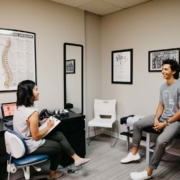4 Red Flags of a Chiropractic Practice
1. They don’t do an a assessment or initial visit
Chiropractors are legally responsible for gathering your health information and assessing you before starting care. This means you should fill out paperwork, sit down and have some form of a discussion pertaining to why you are there before the adjustment occurs.
2. The chiropractor does everything but adjust you
The main job of a chiropractor is to find interference in the nervous system and adjust it based on your diagnostic findings. If you go to the chiropractor and they are stretching, massaging, taping, etc, but no actually adjusting occurs you should be concerned. All of these modalities are great in conjunct with chiropractic, but adjusting is what Chiropractors are trained to do.
3. Your chiropractor is ONLY concerned with getting you out of pain
This isn’t necessarily a bad thing, because it is one of the main reasons people go see a chiropractor. It does however show the chiropractor is either not aware of or choses not to focus on the importance of solving the problem for what got you in this situation to begin with. Usually, it can be structural but it’s also important to look at work and life habits to begin to solve the problem and ask the question “Why did this happen now”. During your care, your chiropractor should discuss health/life goals you are looking to achieve. This is important because your chiropractor should have the tools or resources available to help you achieve health goals, other than just getting out of pain.
4. Your chiropractor doesn’t track your progress
If you have been getting consistent care your chiropractor should have performed a Progress Examination. This is where they can see how you are progressing and share the results with you. This is important because if the care is not working, another technique, chiropractor, or professional should be implemented.









